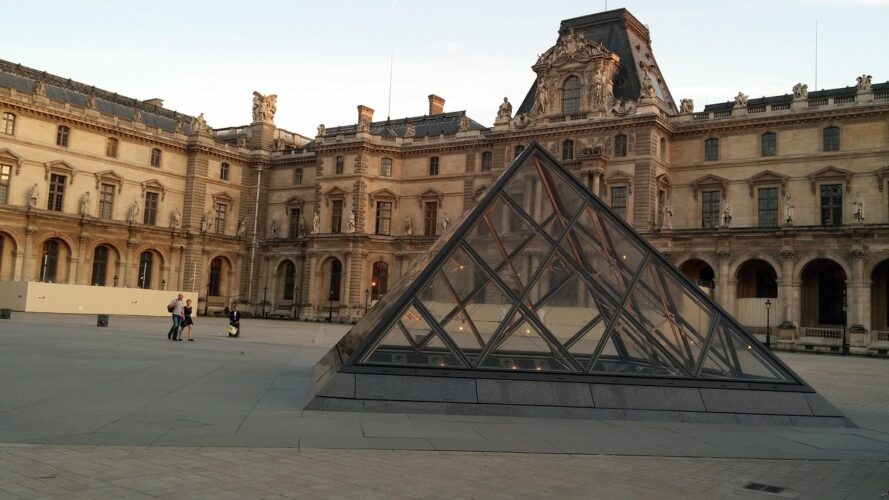Maisie Palmer: L’architecture moderne: une visite à la Fondation le Corbusier, April 2024

Depuis le début du semestre, j’ai pris un cours appelé Histoire de l’architecture, de 1850s à nos jours. Pendant les semaines récentes, j’ai appris beaucoup de choses de la construction de l’Europe contemporaine après la Seconde Guerre mondiale et les figures architecturales notables à l’époque. Particulièrement l’œuvre de Charles-Édouard Jeanneret-Gris, connu plus souvent comme Le Corbusier. Il est un architecte suisse qui est déplacé à Paris en 1917 pour développer sa doctrine et les principes d’une architecture moderniste. Cela dit, ses cinq principes fondamentaux sont: plan libre, pilotis, toit-terrasse, façade libre, et fenêtre en longueur.
Le week-end dernier, j’ai eu la chance de rendre une visite à la Fondation le Corbusier avec un groupe d’autres étudiantes et mon professeur qui est étudié à l’École nationale supérieure des Beaux-Arts. En essence, la fondation est le site de la Villa de la Roche qui est créée par le Corbusier lui-même. Elle est située au sein du 16ème arrondissement (à l’ouest de Paris) et elle est ouverte au public seulement si vous avez un rendez-vous d’avance. Vous pouvez voir l’endroit où le Corbusier a transformé ses idées de l’architecture moderne en réalité pour le première fois.
Le Corbusier a voulu créer une maison inspirée par la connexion entre le monde intérieur et le monde naturel. Comme vous pouvez voir dans les images, le plan est très basique mais il a établi une relation entre la maison et la nature autour de l’extérieur. Les couleurs sont aussi proche à ceux de la terre: primairement le bleu, le marron et le blanc. Aujourd’hui, La Villa de la Roche est une célèbre icône de l’architecture. Je vous recommande de vous rendre visite si vous avez de la chance dans l’avenir !
Since the start of the semester, I have been taking a course called “the history of architecture, from the 1850s until now.” During recent weeks, I have learnt lots of things about the construction of contemporary Europe following the Second World War and the notable architectural figures of the time. More particularly, the work of Charles-Édouard Jeanneret-Gris, known more commonly as Le Corbusier. He was a Swiss architect who moved to Paris in 1917 to hone his craft and the principles of modernist architecture. That said, his five fundamental principles were: a free plan, pillars, a roof terrace, a free facade and long windows.
Last weekend, I had the chance to visit Le Corbusier foundation with a group of other students and my professor who studied at l’École nationale supérieure des Beaux-Arts. In essence, the foundation is the site of the Villa Roche which was created by Le Corbusier himself. It is situated within the 16th arrondissement (to the west of Paris) and is open to the public only when making an advance appointment. You can see the place where le Corbusier transformed his ideas of modern architecture into reality for the first time.
Le Corbusier wanted to create a house inspired by the connection between the inner world (of our daily lives) and the natural world. Like you can see in the images, the plan is very basic but he establishes a relation between the house and the nature surrounding it. The colours are also close to those of the earth, primarily blue, brown and white. Today, the Villa Roche is a celebrated icon of architecture, I recommend you visit if you have the chance in the future.
